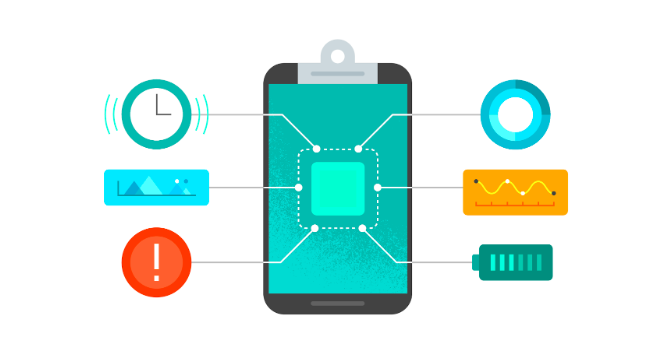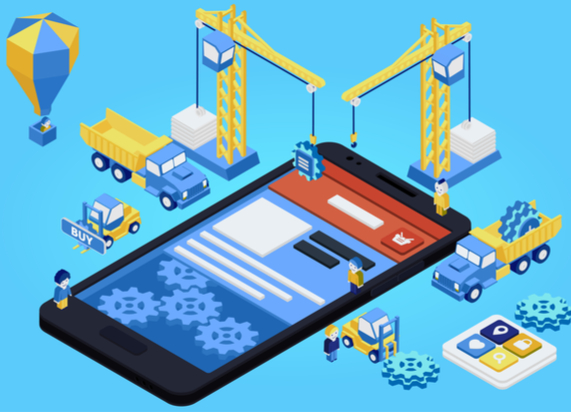“That’s a million-dollar idea,” you excitedly think to yourself about your new mobile app idea. You might even design and develop the app yourself! But if you’re not a mobile app development studio, you’re probably going to run into some obstacles. These issues are often avoidable and easy to plan for with the right knowledge. Fortunately, you’ve come to the right place. We’ve compiled eight common issues that arise when building a mobile app so you can get a head start on your awesome idea.

#1: Poorly Planned Backend
Apps with bad back-ends are prone to crashing, glitchy interactions, and frustrating transitions that never finish loading. If your back-end is slow or sluggish, you can assume most of your users will uninstall your app due to frustration. The great news is that you can optimize your back-end by checking for the following issues: Do you have a conflict with your infrastructure and server? To troubleshoot, try to pinpoint where the issue is coming from. For example, is it from an interactive element that triggers a waterfall of slow network requests? The Application Dependency Mapping (ADM) can help pin down the exact source.
Another potential solution might be to lessen the server’s load by issuing a reverse proxy server. If your back-end responds more quickly with this in place, you’ll also see faster web requests, caching, and more.
Running an application with no bugs or crashes can be incredibly difficult at first. But with adequate planning from Day 1 and some patient troubleshooting, you should start seeing fewer problems as you make your way toward a seamless app experience.
#2: Ignoring the Major Differences Between Platforms
Between Android, iOS, and Windows, targeting specific platforms before others can be a strong strategy for many mobile app verticals. Think about your core user base: are they domestic or international? Do they use tablets more than smartphones? Think about every option and possibility. This is not a decision to be taken lightly.
Some stereotypes aren’t always true; monetization isn’t necessarily easier on Apple’s App Store, and most global users are using Android over iOS. Each platform has its own advantages and disadvantages, but building an Android application involves different workflows than application development for Apple or Windows. Additionally, each platform gives its own style guides and framework, and they all differ in their approval processes.
Device compatibility is also a priority. Double- and triple-check that your app looks and works great on tablets, larger smartphones, and the smallest phones. No button should be too big or too small, and it should be a consistent experience across every device, no matter its width or height. Pay close attention to resolution, size, and pixel density.
It’s worthwhile to compile a list of devices that will be able to use the app for referencing throughout the development process.#3: Badly Designed UI
Design and development are two completely separate parts of a mobile app. Creating a beautiful and easy-to-understand user interface (UI) is time-consuming and highly iterative, but it can hook in new users and keep current ones engaged.
Screen real estate is important to maintain; keep consistent white space and simplify the number of actions on each screen. Make sure your application is sleek and sharp across all of the devices on your chosen platform(s).
If you feel like you’re wasting too much time finding the “perfect design,” A/B testing different iterations can really help drive the design process. Prioritize navigation and screen flow for users. Add analytics tools to measure where users frequently drop off and figure out what’s going wrong. Heatmaps tools can also generate valuable insights.
#4: Assuming Websites and Mobile Apps Are Related
Mobile apps and websites are related: they provide a coherent brand experience for users and can complement each others’ purposes. But if you think a mobile app is an extension of a website, you’re very wrong. An app should provide a different and unique value from the website; therefore, using a website design and screen flow to inform your app’s design and flow will result in major flaws.
Apps should leverage device features like texting and calling, using the camera, using other apps, device storage and data, and more.#5: Third-Party Library Control
Using third-party libraries is very common among app developers across the world. But sometimes the perfect third-party library is outdated and unsecured. Trying to limit the number of third-party libraries can mitigate these risks. Additionally, stick with high-quality libraries that are constantly updated and maintained.
There’s no point in reinventing the wheel, but if the library you’re using is something you can build, you should try to avoid depending on a third party. On the other hand, if the library is huge but only used for one feature, ask yourself if that feature is the true core of your app. If not, you might want to consider removing that library.
Add monitoring tools to your app from Day 1. Do not wait for your app to be hacked to start thinking about security.
#6: Targeting Everyone Instead of Someone
Do you have a target user? Have you explored that user base in-depth, asking yourself what are their problems, their demographics, their goals? If you’re not targeting specific user profiles or demographics, you’re setting yourself up for failure.
No app is made for everyone, and every app should be made for someone specific. Validate your app idea with your target audience. If they hate it, they’re not your target audience. But don’t give up on the idea; your app could be perfect for an audience you never thought about.
Find your competitors and research their marketing, design principles, and their target market.
#7: Marketing, Promotion, and Branding
Just because you consider yourself a designer or developer (or both!) doesn’t mean you can let marketing, promotion, and branding take a back seat. These three aspects of mobile app development must be the driver, not a passenger.
Mobile apps face tough competition, short-attention user base, tight timelines, and difficulty in establishing themselves.
If you don’t market and promote your app, you will not see nearly as much revenue, engagement, and social media love as you would with a strong marketing strategy.[/vc_column_text][/vc_column][/vc_row]
#8: Device Performance and Battery
If your app starts draining the user’s battery, that user will be compelled to uninstall and even write a bad review to warn other users. This would be a huge hindrance to growing your app’s user base, so prioritize performance from the beginning of the development cycle.
To ensure you’re conducting testing correctly, try to test on old, slow devices. New devices make any app feel lightning fast, but can you pass the test on an iPhone 6? By involving developers during the design and ideation phase, you can prevent many performance issues.The Bottom Line on Building a Mobile App
Your app will never be completely finished. You’ll need to iterate, optimize, redesign, add features, and much more over the app’s lifetime to ensure you have a sustainable product-market fit. But if you can launch your app with these eight common issues already resolved, you will be well on your way toward building a mobile app that’s set up for success.
Marc Fischer is Co-Founder and CEO of Dogtown Media, an award-winning mobile app development company. Dogtown Media has achieved incredible successes, including being named as a Top Mobile App Developer by Technology Research firm Clutch and ranked on Inc. Magazine’s exclusive 5000 List of America’s Fastest Growing Private Companies two years running.



